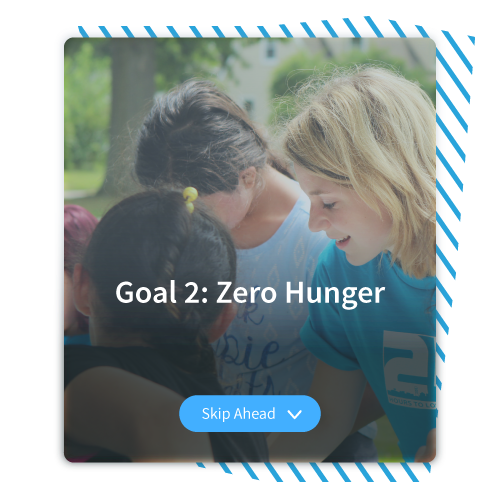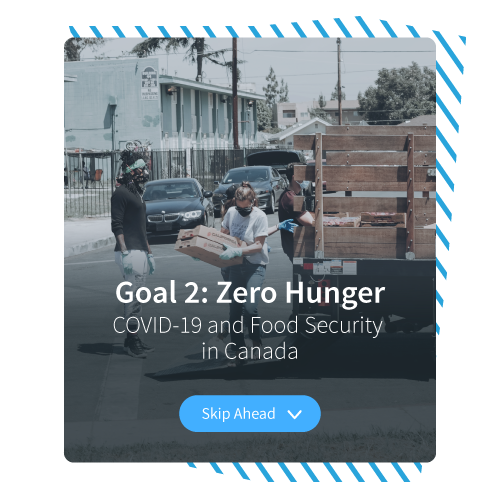Sustainable Development Goals - Ending Poverty & Hunger
The UN #GlobalGoals Week is September 17-26, 2021. With Edwin, you can teach Sustainable Development Goals (SDGs) with a Collection for each of the 17 UN goals.
Here I’m going to look at a couple of different approaches you could take with this topic, using different Edwin resources: First, a social studies approach, using the UN Sustainable Development Goals (SDGs). Then, we’ll look at some options more oriented to health and physical education. Last but not least, we’ll look at some professional resources that could help improve YOUR well-being (yes, it’s ok to jump right there).
Ending Poverty Everywhere
The UN’s first SDG is actually called “End Poverty in All Its Forms Everywhere.” Where do you start on a massive goal like that?
One way to start is to ask students what they think would be an effective response to poverty. There’s a question at the top of the first item in this Collection that asks students their opinion (and a helpful definition of “effective response”). You could ask students to list their answers in their notes, or put them all together in a class poll. Once you work through this article together, you can ask the same question again and look at the change--a great way to get students to self reflect and get at some social studies concepts and skills, too!
If your students need a little more background information before you dive in, you can start with the short video that’s just below the question. It does an excellent job of breaking down complex global issues into easy-to-understand pieces.
The rest of the Collection has so many other rich options I can’t go through them all, but here are some highlights:
Zero Hunger
This Collection tackles the topic of hunger at a global level. It follows a very similar model to the first one:
Introduction with options for student input and an overview video
Videos on Feeding the Planet and Malnutrition which look at hunger as a global issue and from a health perspective
An article on soil use and misuse, which is a good pair with the following video on the interconnected political and social causes of hunger in Nicaragua.
Because this Collection is about the UN Goal, it’s very global in context. But, if you want to bring this issue even closer to home, read on...
COVID-19 and Food Security in Canada
A note before going further: this is a sensitive topic. Some of your students may have direct experience with poverty and food security, and trauma related to it, so this Collection may hit close to home. That is also why this Collection is so powerful and potentially empowering. But you may want to review it with your students in mind before sharing.
With that note aside, this collection explores three guiding questions:
What does it mean to have food security?
How has COVID-19 affected Canadians’ lives?
How can you help others during this time?
Once you’ve laid the foundation with this basic understanding from the first two articles, the really powerful part of this Collection is in People Helping People, where students can see real examples of food programs across the country, using Google Earth. These stories could be inspirations for students’ own projects to address hunger and food insecurity. The possibilities are endless with this tool, and if you want to turn this into a project for social studies, ELA / Language, or even Careers, there are many directions you could go with this. Even though the topic is heavy, building these story maps is just plain fun!
Try it!
If you’ve made it this far in the article, you’re probably thinking something along the lines of “whoa.”
Yes, that’s a lot of potential material to work with, and on weighty topics. But that’s what I love about sharing Edwin material with students. You could pick any of the above collections, or all three, and do one of the following:
Go through the introductory resources in each of the SDG collections as a whole class, to develop a shared understanding of these issues. Then, have students explore the issues through the rest of the Collections and on the web, individually or in small groups, to develop action plans that match their chosen “effective response.”
Ask students to explore the content on their own for half an hour. (This can be directed by you, or a free-for-all.) They can pick out a video, article, or infographic that speaks to them and share their learning back with the class.
Pick the few resources that connect best to your class learning goals and your students’ interests, and make your own Collection out of these. Or, even one step further: just use the videos, or the Google Earth story map. Choose your own adventure!
Poverty and hunger are big, complex, challenging topics to cover, but they are the kind that can engage students fully, light up a class, and get them excited about what they can do to create positive change. Above all, make sure that you explore these as part of a safe, caring environment—and then allow students the room to explore and be inspired.
Explore more:
If you like the idea of using the SDGs in your classes, check out teachsdgs.org and #teachsdgs on Twitter.
Inside Edwin you will find amazing Collections for all 17 UN SDG Goals. Click the icons below to see for yourself:

























